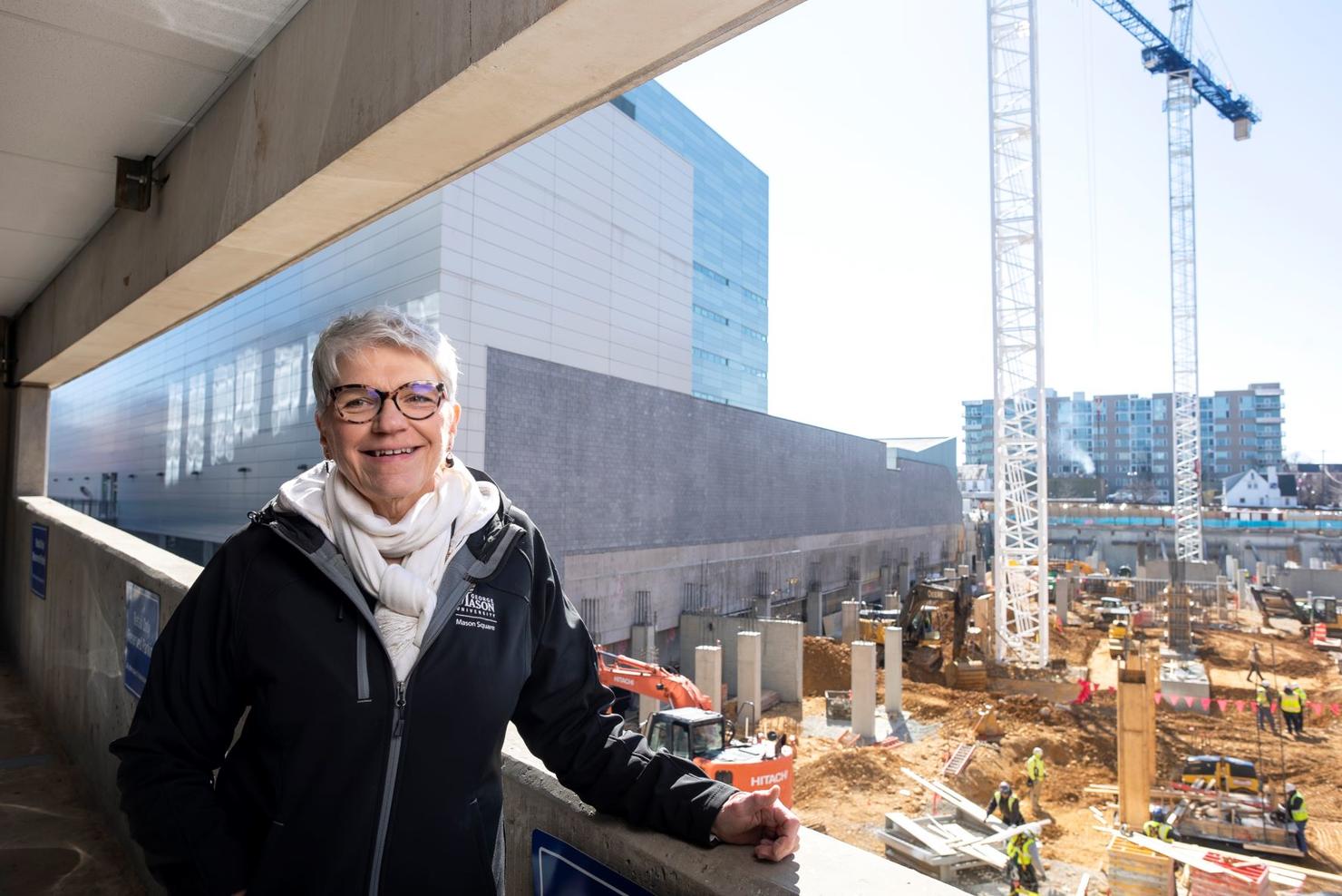Cathy Pinskey
Job: Capital Program Director, Facilities

Cathy Pinskey, capital program director at George Mason University, has watched Mason’s square footage grow a lot over the years—by the millions. When she started at Mason in 2004 as the director of space management, the university had about 3 million square feet across its locations. Today, the university occupies more than 9 million square feet.
After creating systems for managing and tracking space at Mason, Pinskey worked in campus planning. She moved to her current role as capital program director with Mason Facilities in 2016. Pinskey has overseen the university’s largest and most complicated capital projects to date, including the Core Campus Project from 2016 to 2022, which revitalized the heart of the Fairfax Campus. Today, her main focus is Fuse at Mason Square, a new building currently under construction.
Fuse at Mason Square as a frontier. “This project is very different than all of the other projects I have managed at Mason, in that it is a public–private partnership,” Pinskey said. Developed with Mason Innovation Partners, Fuse at Mason Square will support digital innovation, active learning, research, business entrepreneurs, and tech incubators alongside education and policymakers in Arlington.
From design to completion. An architect by training, Pinskey enjoys working at Mason because she has a chance to see a project from beginning to end. “When I worked in private practice as an architect, I would only really see projects through the design and construction phases,” she said. At Mason, she can see how the projects age and are used over time.
Building for everyone. Creating buildings for the largest public research university in Virginia comes with its challenges, too. “The sheer number of interested stakeholders—students, faculty, administration, staff, alumni, and the community of users outside the institution—all are highly invested in Mason’s success,” Pinskey said. It takes careful planning to determine the final scope of the project and stay on schedule. “It’s a bit of science and engineering and a bit of art to make it all work most effectively and efficiently,” said Pinskey.
Weekend warrior. Outside work, Pinskey and her husband enjoy traveling, biking, kayaking—anything that gets them out in the fresh air. They have a cottage at Lake Ontario in Rochester, New York, which Pinskey describes as a work in progress. “I like to design the improvements [and] be my own ‘weekend warrior’ kind of contractor,” she said. “It makes me appreciate how hard contractors work to get things translated between design and construction.”
A strong role model. Pinskey knew she wanted to be an architect ever since she took an industrial arts class in seventh grade, but “when it came time to go to college, I was very shy and scared to leave home.” She says her mom encouraged her to leave the nest in order to follow her dreams. “I could never thank her enough for encouraging me to spread my wings,” Pinskey said. “She was progressive for her time—I found letters in her personal files where she [asked] to be paid fairly for the work she was doing—a job that her male counterparts were paid more highly for at the time. She really was an inspiration to me.”
Giving back. Pinskey loves seeing the results of her work on Mason’s campuses. “It’s extremely rewarding both professionally and personally. I am a first-generation college student,” Pinskey said. "I chose to work in higher education to give back to a system that afforded me many opportunities in life that I would have otherwise not had.”
Read more Meet the Mason Nation
- April 26, 2024
- February 23, 2024
- January 12, 2024
- October 20, 2023
- September 15, 2023
